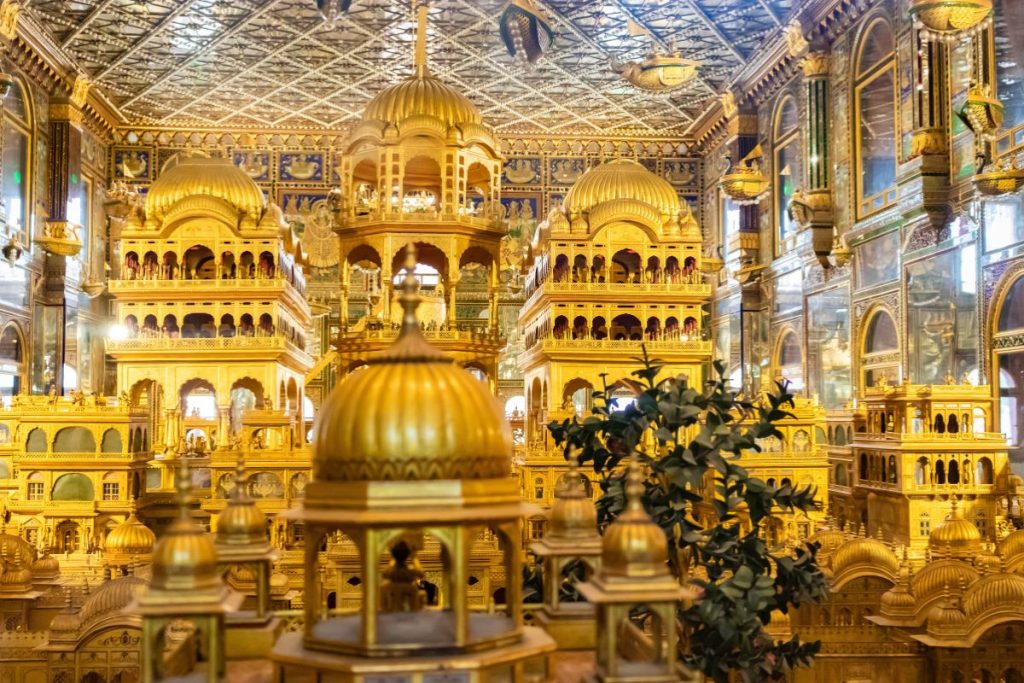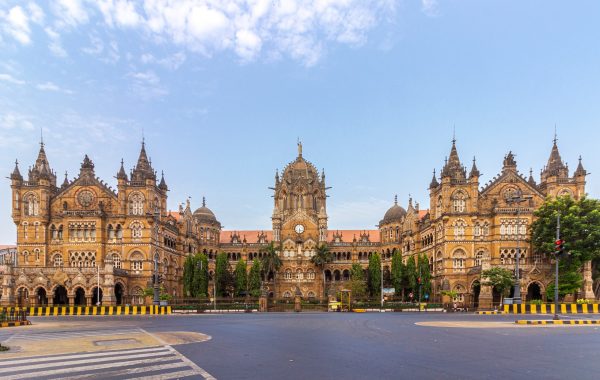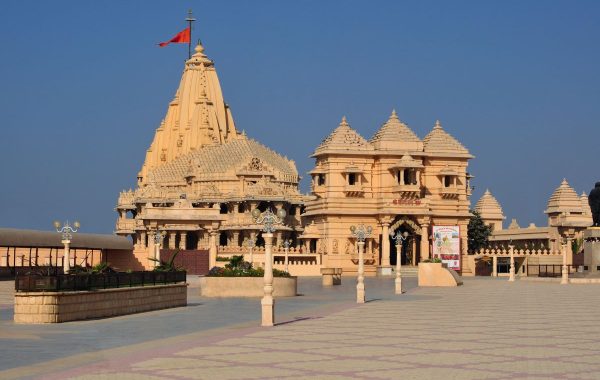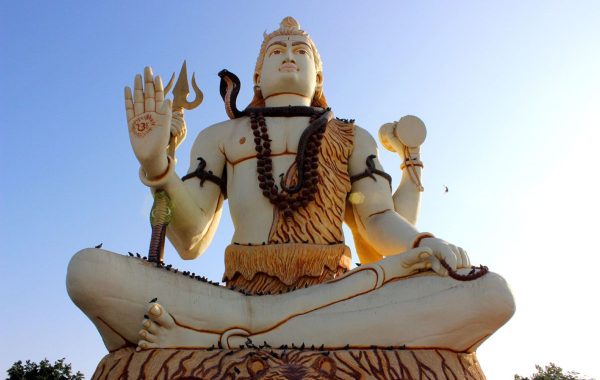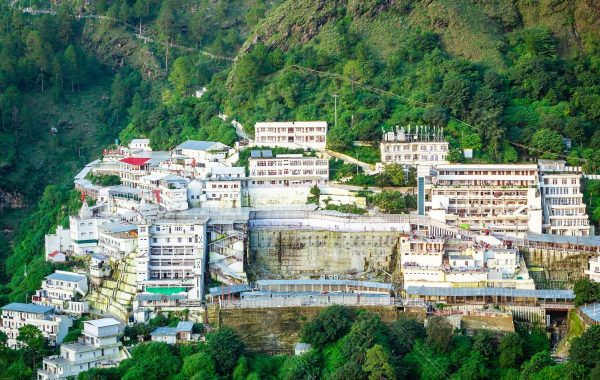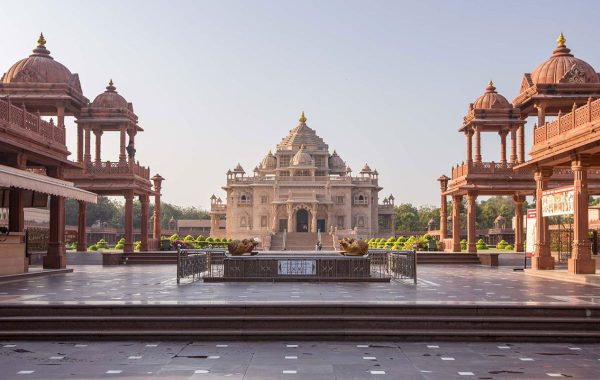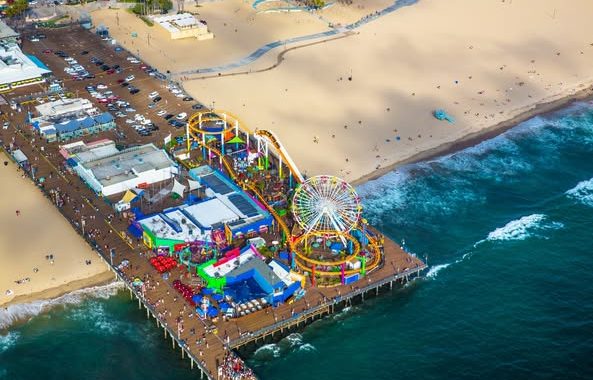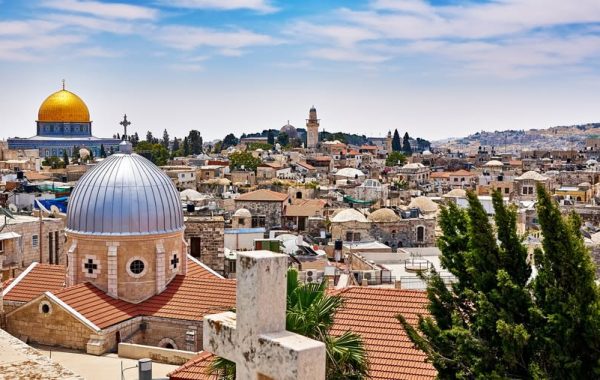From the revered Ajmer Sharif to the tranquil Pushkar Lake, this journey delves into the rich tapestry of religious significance, diverse traditions, and architectural marvels that make these ancient towns a beacon of devotion and cultural heritage.
Nestled in the heart of Rajasthan, Ajmer is a city that resonates with a rich tapestry of religious diversity and historical significance. Renowned for its captivating blend of culture, heritage, and spirituality, Ajmer is a haven for pilgrims and tourists alike. Here’s a look at the religious spots that define the spiritual landscape of Ajmer.
Soniji Ki Nasiyan Temple
Constructed in 1865, this magnificent Jain temple is often referred to as the Golden Temple because of its stunning golden diorama displayed in the double-storey temple hall. The elaborate diorama illustrates the Jain vision of the ancient world, featuring 13 continents and oceans, the golden city of Ayodhya, flying peacocks and elephant gondolas, and gilded elephants adorned with numerous tusks. Additionally, the hall is embellished with gold, silver, and precious stones, making it a unique and mesmerizing site. It stands out as an unparalleled temple in Rajasthan, making it a must-visit attraction.
Ajmer Sharif – Ajmer
Ajmer, famed for its association with the Sufi saint Khwaja Muin-ud-Din Chisti, has gained global recognition primarily due to the presence of his revered Dargah. Having arrived in Ajmer from Persia in 1192, the Sufi saint breathed his last here in 1236, and his tomb stands as one of the paramount religious sites in Sufism. Widely referred to as Ajmer Sharif, the tomb attracts a constant stream of tourists daily. Emperor Humayun played a pivotal role in completing the construction of this shrine, and later, an additional gate was contributed by the Nizam of Hyderabad.
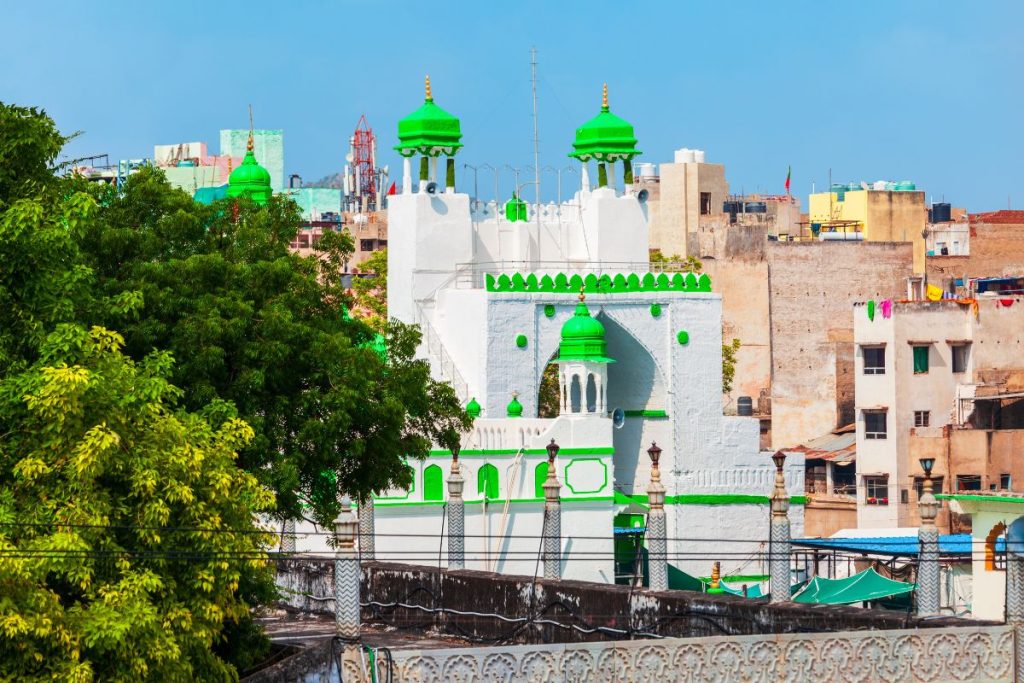
Ana Sagar Lake – Ajmer
Ana Sagar Lake stands as the central focal point of Ajmer, encompassed by the city itself. Originating as an artificial reservoir, this majestic lake was created in the early 12th century AD by damming the Luni River, coinciding with the construction of the city of Ajaymeru or Ajmer. Credited to Anaji Chauhan, the grandfather of Prithviraj Chauhan, this reservoir, which bears his name, remains the largest lake in Ajmer. Nestled amidst ash-colored hills, Ana Sagar Lake provides a picturesque backdrop to the city. On the southeastern embankment of the lake, one encounters the Ana Sagar Baradari—graceful white marble pavilions adorned with charming niches. Reflecting the quintessential Mughal architectural style commonly found around water bodies and gardens, these pavilions were originally part of Daulat Bagh, a pleasure garden commissioned by Jahangir and later maintained by Shah Jahan.
Saraswati Temple – Ajmer
Saraswati Temple, a sacred edifice, worships Goddess Saraswati, also recognized as Savitri, the primary consort of Lord Brahma. This deity is intertwined with notions of fertility and purity, being regarded as the wellspring of all worldly knowledge, spanning from sciences to arts and crafts. Nestled behind the Brahma Temple atop Ratnagiri Hills, reaching the temple entails ascending numerous stairs set into the hillside. Upon reaching the summit, pilgrims are rewarded with breathtaking panoramic vistas of Pushkar Lake and the surrounding sand dunes.
Also Read: Jaipur Guide : Eat Drink and Shop Like a Local
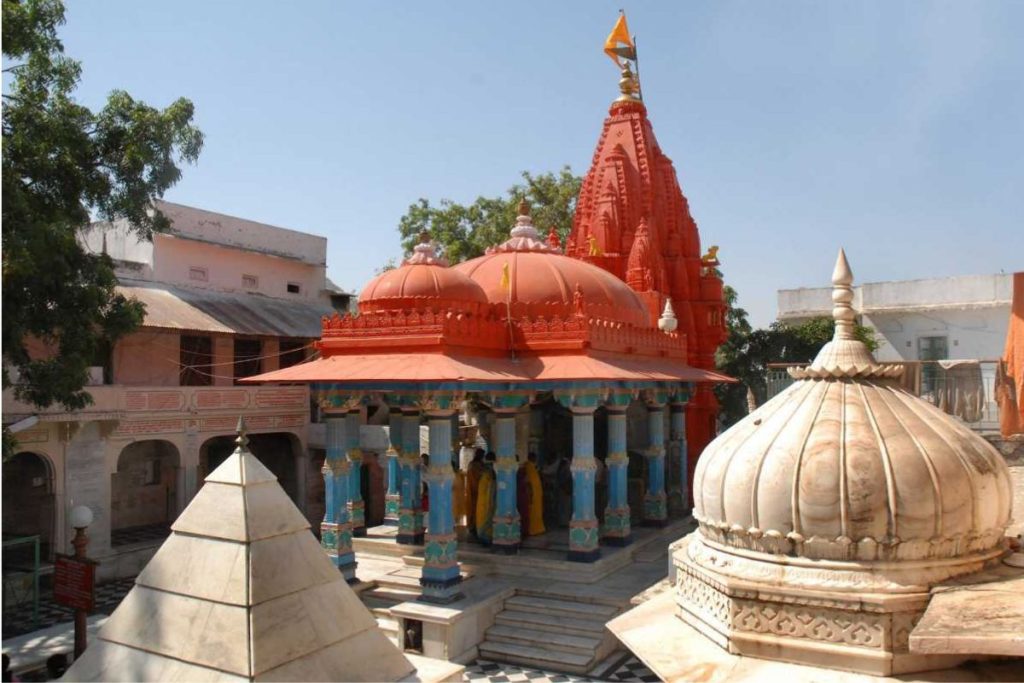
Brahma Temple – Pushkar
Situated in the sacred city of Pushkar (a short drive from Ajmer), the Brahma Temple stands as a premier tourist attraction. This distinguished temple holds the unique distinction of being the sole shrine dedicated to Lord Brahma globally, with a believed age of around 2000 years. According to Hindu mythology, a curse from Goddess Saraswati, the primary consort of Lord Brahma, decreed that he would only be venerated in the city of Pushkar. This mythological narrative elucidates the singular existence of the Brahma Temple in Pushkar, making it an exclusive site for Brahma worship. The temple experiences a surge of pilgrims, particularly during Kartik Poornima, the full moon day of the Kartik month (October), coinciding with the commencement of the renowned Pushkar Fair.
Gayatri Temple – Pushkar
Gayatri Temple is devoted to Goddess Gayatri, the second consort of Lord Brahma. Positioned opposite Pushkar Lake, this temple holds a significant place among the 400 temples in the region. To reach the temple, visitors must ascend a small hill. Legend has it that Lord Brahma, in preparation for a yajna (sacred ritual), dropped a lotus on the earth to determine the ceremony’s location. This spot eventually became Lake Pushkar. However, as Brahma’s wife, Savitri, couldn’t reach the yajna on time, Lord Brahma, Lord Indra, and the priest brought an untouchable girl as a substitute. According to rumors, the girl was placed inside a cow’s mouth for purification. Subsequently, Lord Brahma married her and performed the ritual. However, due to this act without Savitri’s consent, she became angry and cursed Lord Brahma, that he would only be worshipped in Pushkar. As a result of this curse, the Gayatri Temple now stands on the opposite side of Lake Pushkar, where the deity is worshipped alongside Lord Brahma and Goddess Savitri. The temple stands as a testament to the mythical events and divine connections that contribute to the spiritual tapestry of Pushkar.
For latest travel news and updates, food and drink journeys, restaurant features, and more, like us on Facebook or follow us on Instagram. Read more on Travel and Food Network
Trending on TFN
A Spanish Odyssey: Trafalgar’s Unparalleled Best of Spain Itinerary
Imperial Splendors: Trafalgar’s 10-Day Sojourn in Prague, Vienna, and Budapest


